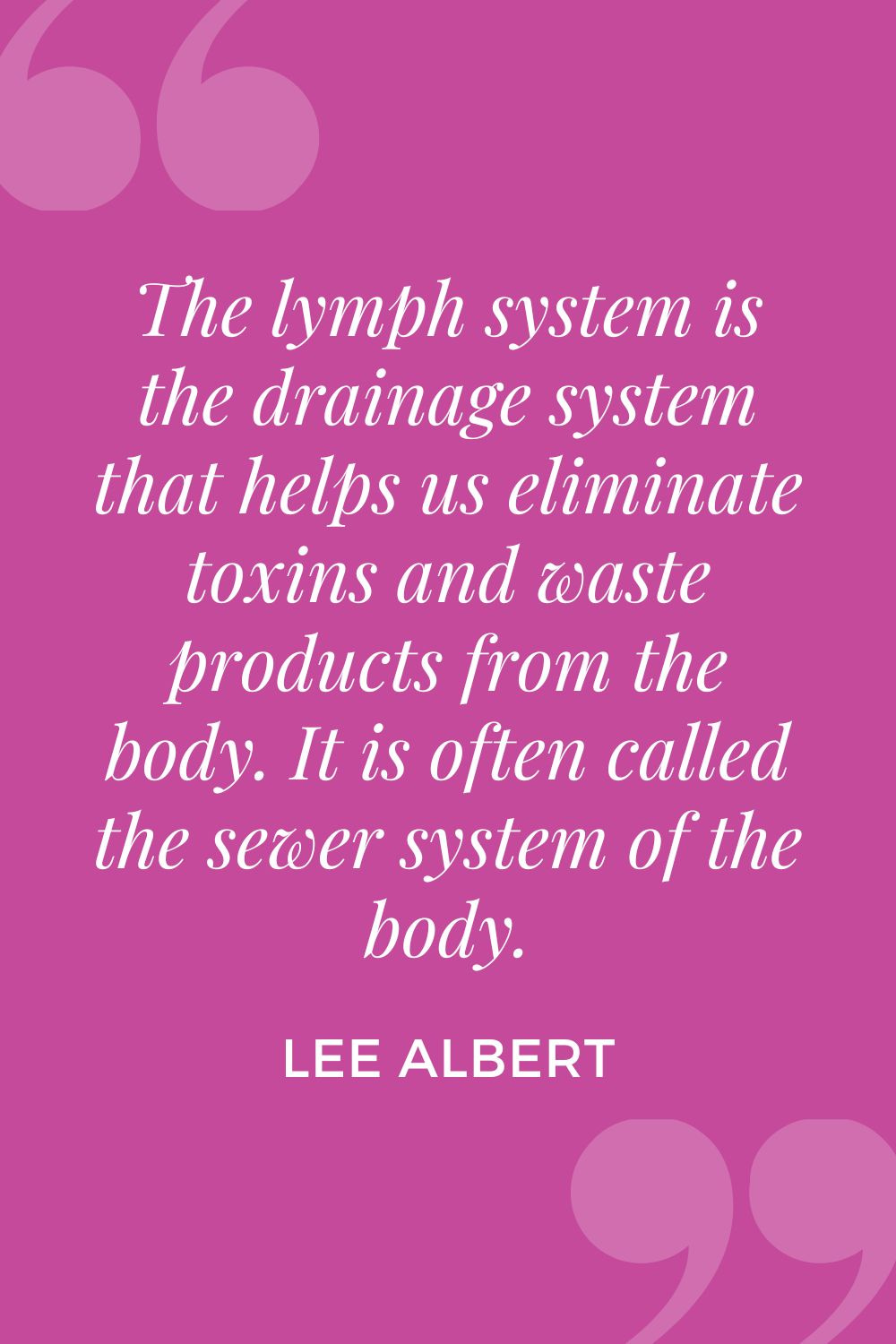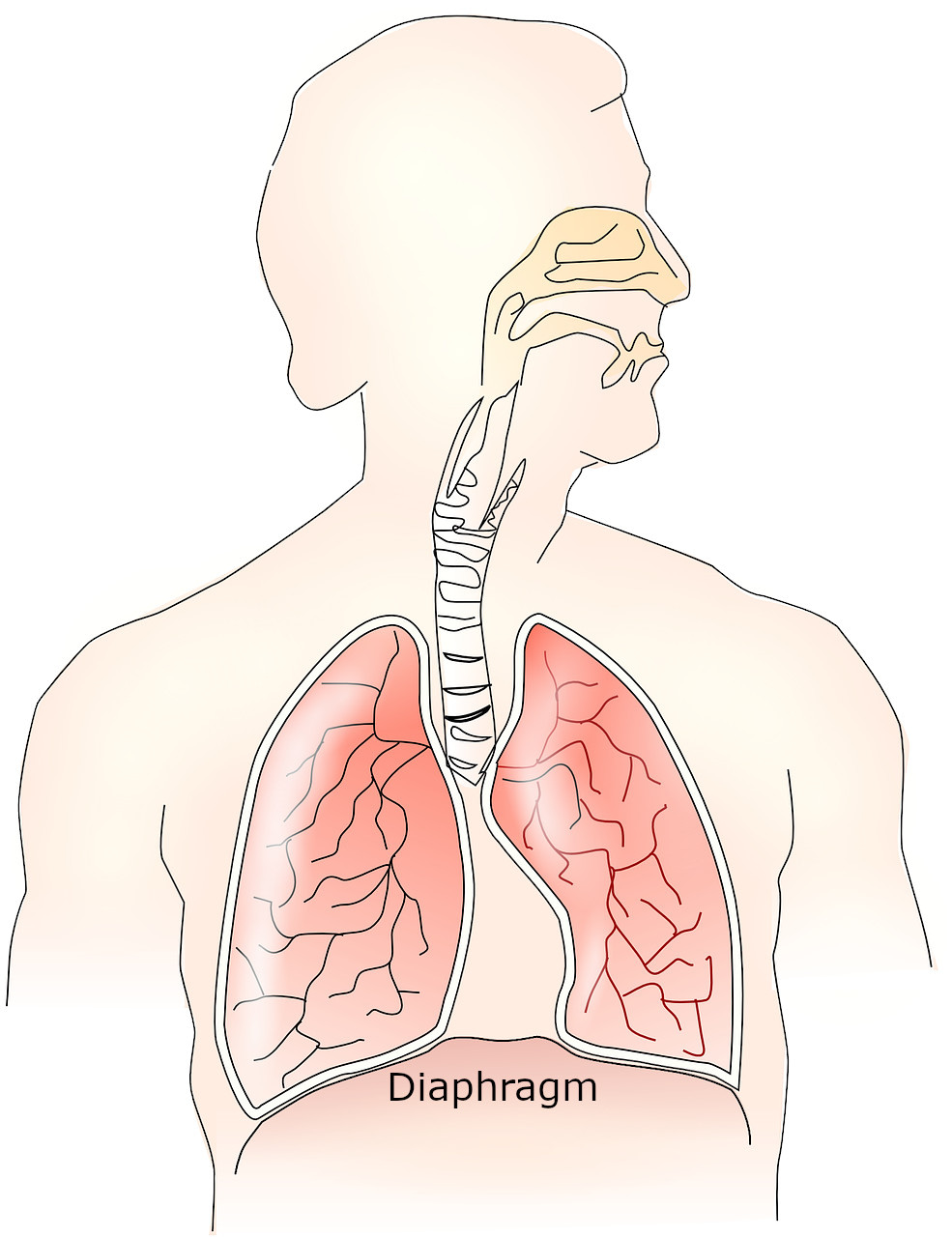
The word detox comes up a lot in the world of holistic health. And I heard an interesting statistic this week while listening to a presentation on breathwork by Dan Brulé. He noted we eliminate 70% of our metabolic wastes through breathing.
First I was shocked – that’s such a high number. Then I realized, of course, carbon dioxide is a metabolic waste and we create (and release) that with every breath. But 70% still seemed so high! So I dug in and did a little more research and found detoxing the body with breath is so much more than just exhaling carbon dioxide.
 Why do we need to detox
Why do we need to detox
We live in a world filled with chemicals. No matter how careful we are at home, we can’t get away from toxins and chemicals used by our neighbors, in stores we frequent, at the gym or yoga studio, and that have leached into the natural environment or are floating in the air.
And if you’re anything like me, despite your best intentions, you don’t always buy organic, you have some plastic in your home, and you drive a car that uses gas and creates its own mix of toxins.
Removing toxins from the body is how we stay healthy. The body recognizes germs, bacteria and other invaders as toxins. Once they’re identified, the body has incredible processes to expel these invaders through a number of outlets.
While our bodies can detox all on their own, if there’s a way to support my body in detoxing more efficiently, I’m interested in learning more!
Dr. Gay Hendricks reinforces the importance of respiration in detoxification in Conscious Breathing, noting, “The human body is designed to discharge 70% of its toxins through breathing. Only a small percentage of toxins are discharged through sweat, defecation and urination. If your breathing is not operating at peak efficiency, you are not ridding yourself of toxins properly.”
Detox Disclaimer
Just a side note. Each body is different, and how you respond to detoxing will be unique to you. Having said that, salt or juice cleanses, colonics, and other fad detox techniques are not normally necessary to remove everyday toxins from your body, and should only be practiced under the guidance of a trained professional – if done incorrectly, they can harm your health more than benefit it.
A brief introduction to the lymphatic system
 Part of the function of the lymphatic system (powered by the white blood cells in the lymph fluid) is to defend against infection by working with the spleen to remove anything which triggers an immune response. “It is the first line of defense against disease. The body’s first contact with invaders signals the lymphatics, calling upon this system to orchestrate the way the infection-fighting cells prevent illness and diseases from invading microorganisms. The spleen also helps the body fight infection, engulfing and destroying bacteria, dead tissue, and foreign matter and removing them from the blood passing through the spleen.”*
Part of the function of the lymphatic system (powered by the white blood cells in the lymph fluid) is to defend against infection by working with the spleen to remove anything which triggers an immune response. “It is the first line of defense against disease. The body’s first contact with invaders signals the lymphatics, calling upon this system to orchestrate the way the infection-fighting cells prevent illness and diseases from invading microorganisms. The spleen also helps the body fight infection, engulfing and destroying bacteria, dead tissue, and foreign matter and removing them from the blood passing through the spleen.”*
Or in simpler terms as Lee Albert notes in Yoga for Pain Relief, “The lymph system is the drainage system that helps us eliminate toxins and waste products from the body. It is often called the sewer system of the body.”
Most of the systems in the body have their own engines – built in drivers which help move solids, gases, or fluids throughout the body. The lymphatic system is different. “Every cell in your body is surrounded by lymph fluid. Your body contains more lymph fluid than blood. The lymph system however, unlike the circulatory system, does not have a pump to move the waste. The lymph moves when we move our muscles.” Yoga for Pain Relief: A New Approach to an Ancient Practice
Moving the lymphatic fluid
Since the lymphatic system doesn’t have its own engine to move the lymph throughout the body, we can help support this system in optimal functioning in two simple ways.
The power of movement
By moving the body, we’re moving the lymphatic fluid. As it moves through our system, it’s able to detoxify our bodies as it encounters toxins and other invaders and removes them.
There’s a high concentration of lymph nodes in our neck, underarms, and groin used for superficial drainage of lymphatic fluid. By exercising in ways that move the muscles in those parts of the body, we pump the lymphatic fluid through the body and increase the effectiveness of the lymphatic system. A great way get lymph moving through your body is taking a daily brisk walk with your arms swinging.
 The diaphragm is located below the lungs, when we inhale deep into the body and expand the lungs, the diaphragm moves downward, activating the deep lymphatic system.
The diaphragm is located below the lungs, when we inhale deep into the body and expand the lungs, the diaphragm moves downward, activating the deep lymphatic system.The power of breath
The second way we move lymphatic fluid is through deep diaphragmatic breathing.
Again, Lee Albert notes “Toxins build up in the body due to inactivity and shallow breathing. Deep belly breathing helps to speed up the movement of the lymph.”
While the superficial lymphatic drainage system is concentrated in the groin, armpits and neck, the deep lymphatic drainage system is primarily in our thoracic (central chest cavity), diaphragm and lower abdomen. This means that through deep diaphragmatic breathing, we’re able to activate a part of the lymphatic system we wouldn’t reach simply through movement alone.
Diaphragmatic breathing – Belly Breath
Ready to help detox your body through breathing? If you’re new to breathwork, start with a basic belly breath (guided audio below) which will help you learn what it feels like to practice diaphragmatic breathing. You can use the audio below, and learn more about the breath practice here.
 Diaphragmatic breathing – 1:4:2 Breath
Diaphragmatic breathing – 1:4:2 Breath
Ready to take this practice to the next level?
The International Alliance of Healthcare Educators (IAHE) suggests using a practice of 1:4:2 breathing. Inhale for a count of one, hold for a count of four, and exhale for a count of two. You can also use this pattern to increase the duration of the breath by keeping the ratio of 1:4:2 constant (your next breath would be inhale for 2, hold for 8, and exhale for 4).
The IAHE notes that “Exhaling for twice as long as inhaling brings oxygen to the blood and activates the lymphatic system. Perform deep diaphragmatic breathing two or three times a session, three times a day. You can do this either sitting or lying down.”
This practice has very long periods of breath retention as you increase your length. If you struggle with this longer breath retention, here are a few tips:
- Relax the body – you want your body to feel at ease as you are sitting or lying down.
- Do a quick scan and make sure you’re not holding tension in your pelvic floor, abdomen, shoulders, fingers, neck, or face.
- Can you gently move your lips (think subtle fish lips) and blink your eyes?
- Generate a little saliva in your mouth and swallow.
If you scan through these relaxation points during your breath retention, it will help you hold the breath for a much longer period than if you tense up your body.
Contraindications
It’s important to remember we are not cookie cutter humans and what works for one person may not be right for another.
If at any point you feel light headed, discontinue the breathwork immediately and return to your normal breath. Additionally, any breathwork practices which require breath retention (either holding the breath in or out) are not recommended for pregnant women, those who have eye or ear problems, and those with high blood pressure.
Finally, breath retention can be triggering for those who suffer from anxiety or who are working with active trauma (either big or little t). If this applies to you but you’d like to experiment with this breathwork, begin with just one count of breath retention at the end of the inhale for your first practice. Adding in one additional count each time you practice this breath until you reach a point where you are in the 1:4:2 pattern. Increase your retention by one each time you lengthen the breath until you return to the 1:4:2 ratio before increasing again. If at any point this practice becomes triggering, please discontinue the breathwork and return to your normal breathing.
If any of these contraindications apply to you, I encourage you to stick with the basic diaphragmatic breathing technique (belly breath) with a 1:2 ratio (one count inhale to two counts exhale) and omit the breath retention.
If you’d like to take this practice deeper, I breathwork techniques are just one of the tools I use to help my Individual Coaching clients bring more resilience, serenity, and joy into their lives.
Related
One thought on “Amazingly effective way to detox the body with breath”
Leave a Reply Cancel reply
This site uses Akismet to reduce spam. Learn how your comment data is processed.
[…] bird, cloud, ray of sunshine on the grass, anything calming in nature, and take a few conscious deep belly breaths. Just 30 seconds or a minute of this slow breathing is enough to remind my body to move away from […]